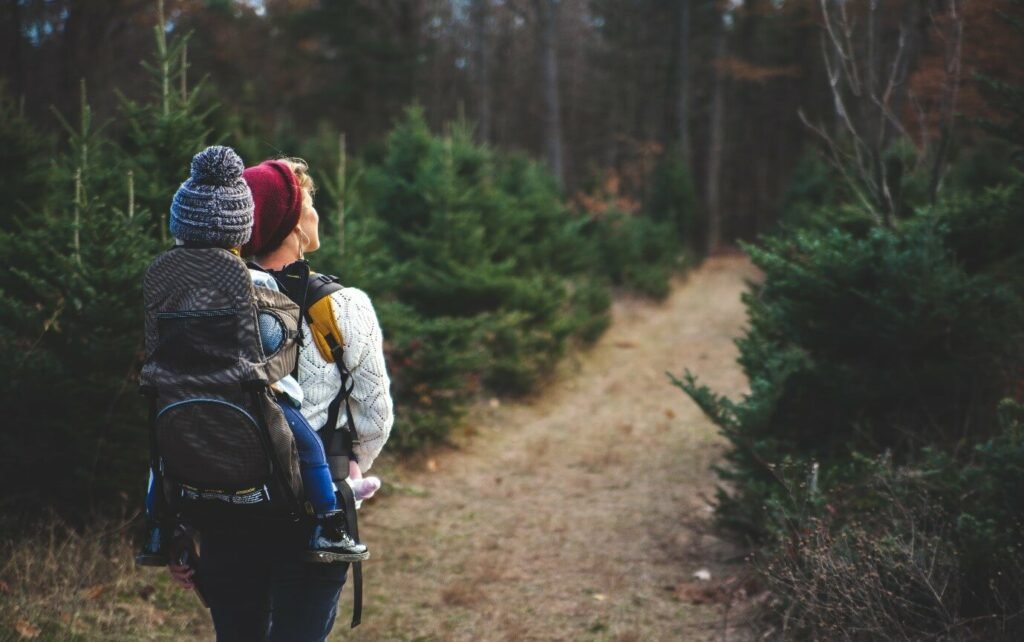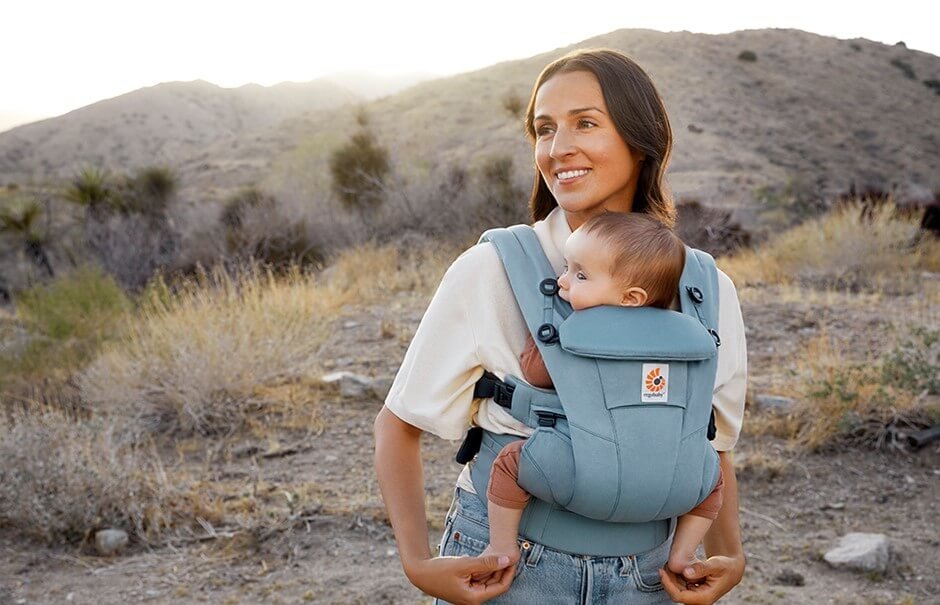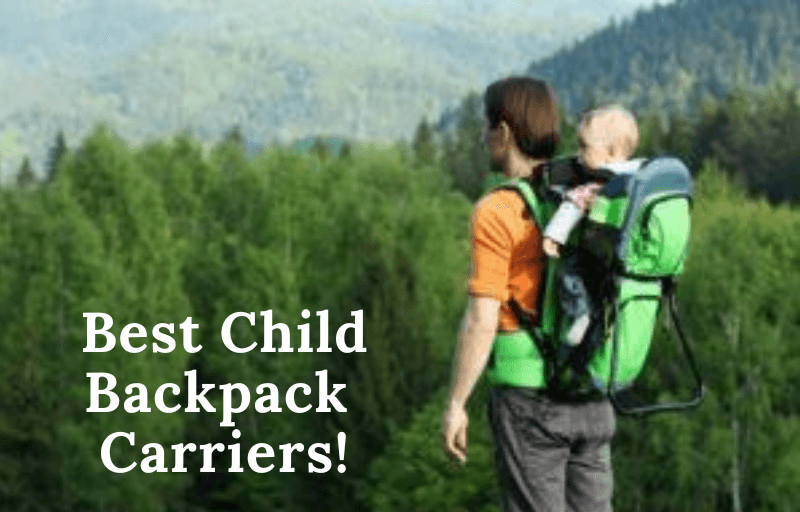When you enjoy nature expeditions and family treks but have a little child, you might consider purchasing the best kid carrier backpack to use on your adventures. The purpose of this special accessory is to allow everyone to fully enjoy the outing as much as possible. On one hand, you will have a convenient way to transport your infant so that he can have a lovely view of the surrounding scenery. On the other hand, you can carry your child for long periods of time without experiencing any difficulty.
The market offers a wide variety of Best Child Carrier Backpack! allowing all parents to pick the one that is right for them. For the parent as well as the child, each model must address a certain need that has been identified. In any event, you can use our guide to narrow down your search for the appropriate type. You will be able to enjoy your family outing to its fullest extent if you do so.
The Best kid Carrier Backpack
What is a kid Carrier Backpack?
As the name implies, this device was created specifically for taking long walks in the countryside. When you wish to go hiking in the mountains, for example, you will benefit from having a kit that is both functional and lightweight. You can use the baby carrier as a storage device at the same time, which is particularly useful if you are not able to bring a second backpack. You will have plenty of space to keep diapers, tissues, wipes, and other baby essentials, thanks to the numerous storage pockets.
In addition, there are always insulated pouches for infant bottles to keep them warm. When traveling in a hot environment, a hiking carrier should be used rather to a physiological baby carrier or sling for your child. The seat of this piece of equipment is set at a critical height so that the infant does not come into direct contact with the carrier during use. In this way, you avoid overheating and excessive sweating that might occur because of the contact between the two bodies.
Finally, due to the elevated position of the seat, baby will have the opportunity to take in the surrounding scenery. In fact, baby can see over the shoulders of the carrier when he is in it. His participation in the pleasure of walking or hiking will thus be enhanced. Your kid will be awestruck by the natural surroundings that contribute to the enjoyment of hiking: mountain ranges, rivers and streams, trees, birds, and so on.
When Should you Opt for a Kid Carrier Backpack Over a Physiological Baby Carrier?

1. For Long Mountain Hikes!
When hiking in the mountains, you can’t bring several bags for the day; suddenly, the advantage of this mode of transportation is the numerous storage compartments, including the drinking pocket, where you can store everything for the baby, including diapers, bottle, and so on. It is even more appreciable if specific pockets are isothermal, making it possible to slip the bottles inside them.
2. For Traveling with the Baby in Hot Regions!
A comfortable seat is provided for the infant, which is not directly tied to the wearer’s body heat, in contrast to the physiological baby carrier or sling. In hot places, it’s much more pleasurable! This prevents excessive perspiration caused by the heat generated by the two bodies being placed side by side.
Note: When should you start using a Hiking Baby Carrier with your Child?
During your baby’s first few months, wearing him or her in front with a physiological baby carrier or a sling will be more comfortable for both of you. You’ll be able to view him better and feed him much more easily this way. You can place your baby in a backpack hiking baby carrier at about 7/9 months, depending on the age of the child as soon as he or she is sitting up well and the neck is strong enough to support the head.
Some Important Points to Consider when Choosing the Perfect Hiking Carrier!
1. Comfort for both the Baby and the Wearer!
When shopping for a baby carrier, the most important consideration is comfort. Remember to look at the bag’s different settings to make sure everything is correct: adjustable straps for proper weight distribution, and a waist belt to keep the baby carrier in place on the back. Baby will enjoy good, seated comfort, thanks to a padded seat and harness, as well as safe and simple connection mechanisms.
There has been much discussion over the non-physiological position of the baby in the carrying backpack. However, by using stirrups and lifting the infant’s legs so that they are no longer suspended in the air, the youngster is placed in a physiological posture!
2. Minimal Weight!
This is a critical factor to keep in mind! Take into consideration that your hiking baby carrier will serve you until your child is 3/4 years old; at that point, it will weigh 14/15 kg, and when you add the kilos of the kid carrier backpack, you will be carrying 18/20 kg on your shoulders! As a result, it is preferable to use a comfortable, but lightweight back baby carrier.
3. Storage Space
As previously said, you will bring everything your child will require for the hike, including: 5-6 nappies, bottle (milk and water if powdered milk), diaper and liniment, changing mat, warm clothes, a piece of clothing for rain, and probably the blanket, a hat, and sunblock.
4. Ease of Use:
Hiking carriers should be user-friendly and easy to use, especially when you’re on the go. Look for carriers that have simple and intuitive adjustments, easy entry and exit points for your child, and quick-release buckles. Features like a kickstand or a stable base can make it easier to load and unload your child.
5. Durability and Quality:
A hiking carrier should be able to withstand outdoor conditions and last for a long time. Check the materials and construction of the carrier to ensure it is durable and can handle the rigors of hiking. Read reviews or seek recommendations to gauge the quality and longevity of the carrier.
Advantages of a Hiking Baby Carrier
The hiking baby carrier has several advantages, whether you’re trekking in the mountains or taking your family on a family vacation:
- The infant carrier is a versatile mode of transportation for hiking and travel. It may be used in town and on trips as well as for trekking. Using it instead of other modes of mobility, such as a stroller, can be much more convenient if you are visiting the city and there are crowds, if you are taking public transportation, or if there are stairs to climb.
- Baby comfort in the hiking baby carrier is ensured by the fact that your child’s back is appropriately supported. Baby is not clinging to his or her parents. He has plenty of room in front of him. He can grip objects, like as his cuddly toy, and he also has a certain amount of freedom of movement. If your child gets weary of having his or her legs dangling, he or she can also place their legs on the stirrups of the hiking baby carrier.
- kid Carrier Backpack can incorporate features such as blinkers on the sides and a padded chin rest that allow the child to sleep while in the carrier: ours slept for hours on end while we were on our hikes.
- Baby can see the world best from above! When wearing a hiking carrier, baby can see the world the best over your shoulder. You have the option of adjusting the height of the baby seat. Because of this, it is possible to elevate the carrier above the shoulders and the head of the wearer, which is not possible with a physiological baby carrier.
Are “Physiological Baby Carriers on the Go” a better Alternative?

Physiological baby carriers are ideal for wearing in front of the infant during the first six months of his or her life. If you don’t stroll for long periods of time on a regular basis, a physiological baby carrier will suffice when the baby is 6 months old. However, carrying your child on day treks, especially for several hours at a time, is not a good idea for both the baby and the carrier: it will be very harmful for your back in the long term, and the carrier will keep the baby plastered to you.
Furthermore, the hiking baby carrier has more storage space than the physiological baby carrier. It is also more practical, especially if you are strolling for an extended period and have many baby items to carry, such as bottles, nappies, baby food, etc.
Additional Resources
If you are looking for more tutorials, walkthroughs and troubleshooting about camping and enjoying the outdoors, here are some additional posts to check out:
The Bottom Line
A Hiking baby carrier is a far better alternative than a physiological one, especially if your baby is a year old! Its more comfortable, easily manoeuvrable, has a lot of storage and even weighs a bit less. So, I strongly suggest you opt for one, and after reading our guide, I am sure that you are more than capable on choosing the perfect hiking baby carrier based on your requirements!
To help you further, I have reviewed the best rated and most popular models use by active parents. Find out more by reading my “Best Child Carrier Backpack!” Thanks for reading, If you think I forgot something or if you simply want to share a story or some advice, please feel free to leave your comment or story below. Be safe and have fun.!
Thanks for reading…. Be Safe and Happy Camping.!

